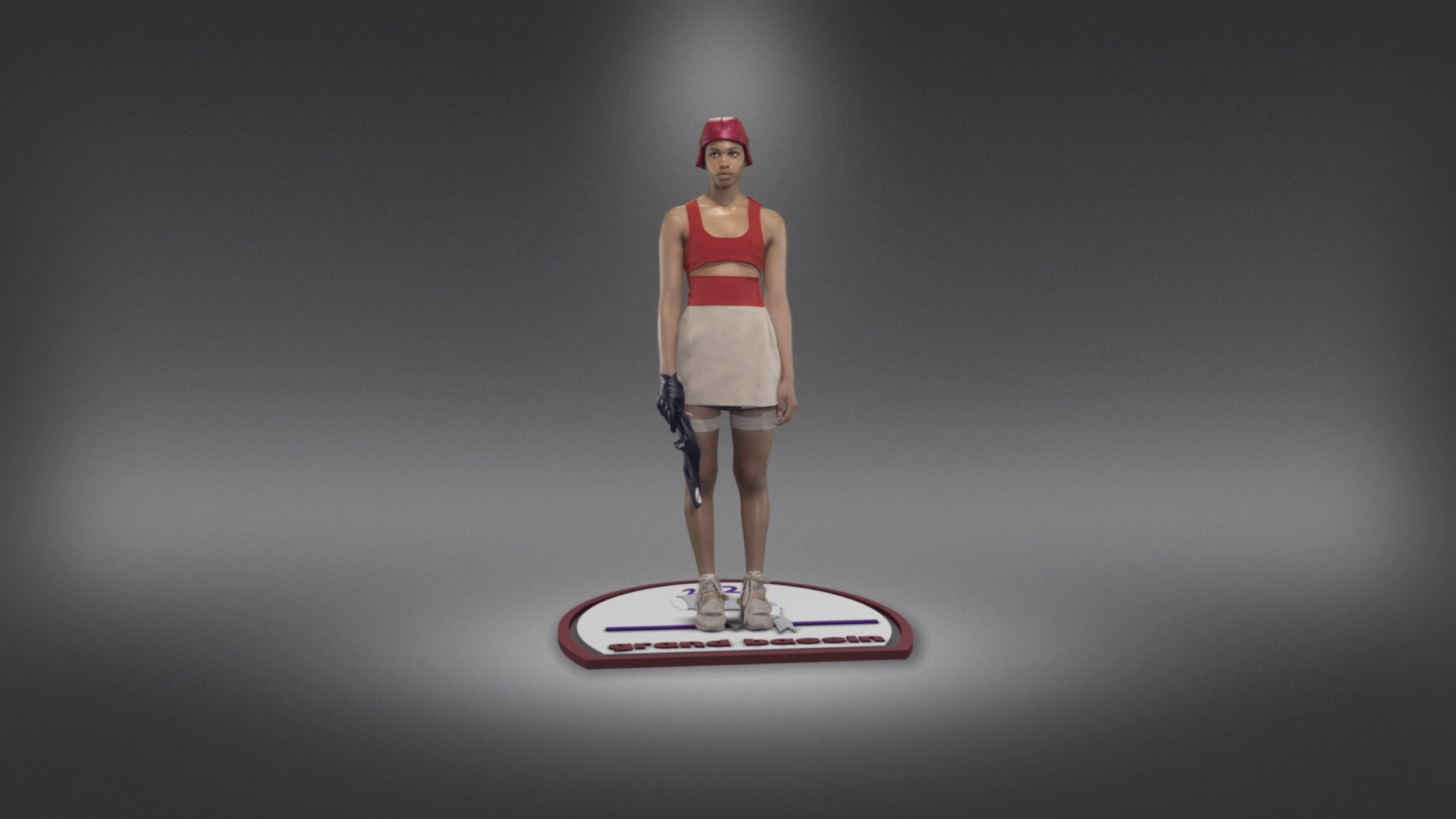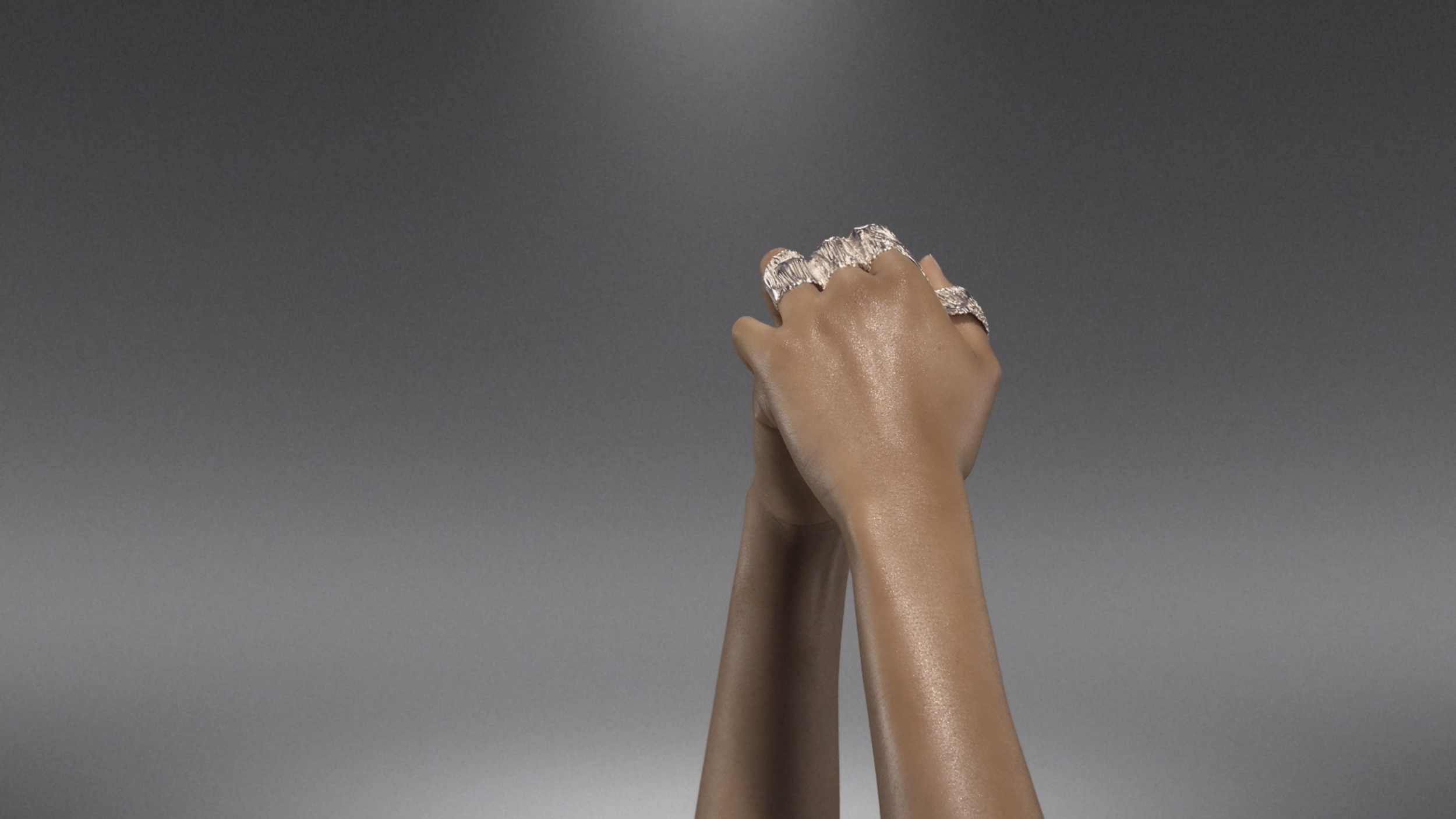Meet Margot Charbonnier: The Designer Subverting Gendered Expectations Through Sportswear
Throughout the history of fashion, clothing has transformed from a mere biological necessity to a tool capable of addressing social and political matters. The fashion brand Sample.cm enables its designer Margot Charbonnier to demystify the gender dynamics present in boxing. Her Grand Bassin 2021-CLUB collection encourages female liberation while targeting comfortability and practicality with all-in-one pieces. Charbonnier’s designs are inspired by the hand-wrapping technique applied before a boxer’s glove comes into full force with its opponent.
To find out more about the creative process behind Sample.cm, PILOT asked the designer about how her latest collection disrupts the idea of beauty and rage. We also spoke about how fashion can act as a conveyer of change.
What is your relation to sport? Why is sportswear so essential to you and to Sample.cm?
The launch of Sample.cm sportswear was a perfect opportunity for me to merge aspects of my background in sociology and fashion. Sportswear naturally incorporates both aspects: it is related to use, to the body, to the practice and that is a part of fashion I believe [sportswear] is most related to [social] design because it has the connection to functionality itself.
For me sportswear is really a magnifying glass to assess gender and other social problems, so it can efficiently explore social questions through sport. I decided to integrate sportswear into the DNA of Sample.cm from the beginning, but with an intellectual and conceptual approach to it.
Why did you decide to use the idea of female rage as the centre of this collection? And where does that anger come from?
I believe this last collection is the most personal one for me because of my experience as a working-class woman designer. In the fashion industry, I tried for a long time to fit in and pretend I was part of a world that I’m not really part of and it wasn’t so easy. That anger came from my personal perspective as a designer. I felt that in the same way when I’d practice boxing a few years ago. This emotion needed to be translated into a creation and to become a cathartic experience through the collection.
More recently, I read Soraya Chemaly’s Rage Becomes Her and Rebecca Traister’s Good and Mad. They are both American feminists that write about the oppression of women and the psychological and physical impact of how society teaches girls to hide their feelings. With the latest collection, I felt it was necessary for me to be honest and to use that anger as a productive tool.
In this collection, you showcase sportswomen and create your own pieces inspired by them. Why is it a recurrent theme of your creative process?
This is the first time I really explored the woman perspective in sports, specifically in the design process. Practicing boxing or any martial art as a girl is very disruptive in regards to gender expectations. When a girl occupies a boxing gym and expresses a physicality that she’s not expected nor welcomed to, it is a real political act for a woman.
More widely, girls in sport are always called the “tough girl” or are unfortunately called a “tomboy”. Female representation in this area is lacking in both fashion and sport, so I felt it was urgent to give girls an ability to express their anger. Allowing women a complex identity can be super productive to bring change forward in regards to gender dynamics.
Many of the pieces of your new collection imitate boxing hand-wraps. They are figure-hugging, yet they are not restrictive for the wearer’s body. Is this related to themes of female rage, female liberation and confidence?
In terms of design for this collection, it came naturally that the boxing unwraps would be the starting point to dictate all the pieces. All the clothes are all-in-one, top and bottom. They are always attached to each other, even if it looks like a top and a skirt it’s actually designed like a “dress” and you are going to be wrapping it around your body.
Metaphorically, the collection aims to represent the moment when you are preparing for a fight - for a rumble. I believe clothes can very often give someone confidence and a specific state of mind. In this case, as with the boxing practice itself, I opted for the clothes to be a cathartic experience. It’s also a very complex construction in terms of pattern cutting with the top and bottom attachment I mentioned. For the first time, it gave me the opportunity to offer bespoke tailoring for all types of body and all genders. The clothes in this collection are made by the measurements, because of the attached technique.
You talked about how you did not fit into the fashion community at the beginning of your career because you are a designer from a working-class background. How has your personal experience influenced your social awareness of this collection?
With boxing, you have this fantasied portrayed version of social mobility. Coming from a working-class background, there’s this idea that you can make money and surpass your traumas through boxing which is something repeatedly seen in movies.
To have boxing as the centre of this collection was a strategy. It became a way that I could talk about female boxing because it’s disruptive, embarrassing and somehow a bit provocative, so I wanted to offer a different perspective of femininity.
Your 2020 collection was centred around tennis which is a sport geared towards the upper-class. Do you believe your new collection is a response to the previous collection given its social disparities whilst exploring social awareness?
With the previous collection it was all about preppy culture and making fun of it. The photoshoot for it was with an upper-class family from Amsterdam, and it was fun to play around with the designs and the idea in a sweet way. With this new collection there’s a different personal dynamic as a designer. I think they are responding to each other. This is how I approach my work
I feel that your new collection highlights that beauty can be aggressive and transgressive, not just an embellishment of the human body. Was this represented by the knuckleduster you brought in? How was the creative process behind it?
I started this collaboration with another label by the designer Franziska Vogt, called Yccij jewellery. I wanted something related to the boxing hand-wraps. The ring is a direct reference to the knuckleduster. I wanted to make it attractive but also threatening because a knuckleduster is not something one would expect a woman to be wearing. You can see beauty but you can also see it as a statement of action and as a potential change all in one piece of design.
Any idea on what sport is going to be at the centre of a future collection?
I don’t know yet what direction the next collection is going to take. I want to continue to explore many sports even if they’re not related to my background. I find every collection to be a chance to explore a new world, not only with the sport itself but the culture and history that comes with it.
What I can say is that Sample.cm will, from now on, be positioned towards tailoring rather than streetwear which I was more inclined to before in terms of style. Also, social questioning will definitely be a big part of new collections because I felt very true to myself with this last collection and I want to keep going in the same direction. I want to keep a slow-paced design and do an annual collection. I also want to take time to debate the creative process, engage with social media and to integrate interactivity and customizability into clothing.
Check out Margot Charbonnier’s 2021 collection here
&
Keep up with upcoming collections on the Sample.cm website or Instagram page.
Photos courtesy of Sample.cm




